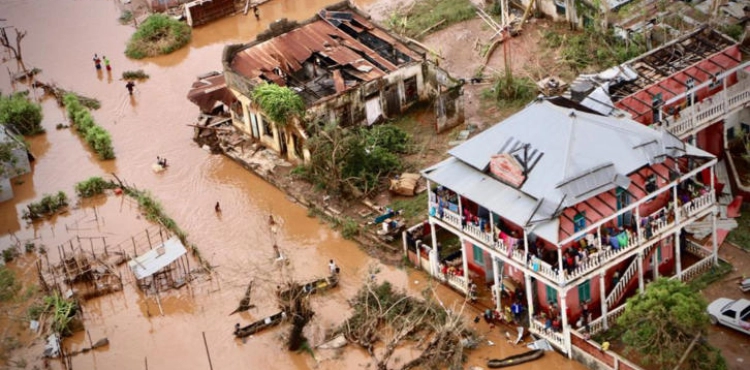Thousands of people still stranded in flooded areas are waiting for Thursday in southern Africa amid deep concern that aid agencies have arrived in the wake of Hurricane Idai, which has killed at least 356 victims.
In Mozambique, 15,000 people need to be "immediately rescued," warned Environment Minister Celso Correa. "They are stuck in houses and on the roofs," he told AFP from Berea, center of the second city hit by typhoon Idai.
"They are not well, they are alive ... but they need relief and get them out of here," he said.
Every minute counts, "he said, adding that" thousands more are being held in high places on small islands. "
Hurricane Idai, who hit Mozambique and Zimbabwe later on Thursday, was on the rise to 356 on Thursday, official sources said.
At least 217 people were killed in Mozambique and 139 in Zimbabwe, where victims were buried on Thursday.
Earlier this week, Mozambican President Philippe Nossi warned that the toll could exceed 1,000.
"We can not believe we are still alive," said 16-year-old survivor Mariamo Hombroto, who is still shocked. "We were very scared when the storm started."
"In the past years there have been some storms, but it´s the first time I´ve ever lived," said Julia Lewis, the mother of three children. "I will start my life again," she said in the village of Praia Nova (center).
Altogether, there are currently 350,000 people living in flooded areas in Mozambique, according to the authorities. In neighboring Zimbabwe, 200,000 people have been affected by floods and hurricane Idai, the United Nations says.
"This is the worst humanitarian crisis in the history of modern Mozambique," said the International Federation of Red Cross and Red Crescent Societies.
But water has begun to decline in Mozambique, Correa said Thursday. "In some places, the water level was up to 11 meters, and three meters down"
As the weather subsided, relief operations on Wednesday rescued some 3,000 people stranded in areas surrounded by water on roofs or trees.
But given the magnitude of the disaster, relief work still faces difficulties in meeting the enormous needs.
"We did not eat anything," Humberto said.
WFP, which plans to assist 600,000 people in the region, has begun food distributions in and around the city of Bira and in Dundo, 45 kilometers to the north-east.
But the area hit by floods is vast.
"We work around the clock to make sure we provide food and medicine to disaster victims" to prevent deaths from disease, he said.
"The displacement of a large number of people and the floods caused by Hurricane Idai greatly increase the risk of malaria, typhoid and cholera," warned Machidisu Moite, WHO Regional Director for Africa.
In the city of Pera, which has a population of half a million, its main hospital partially damaged by the roof, 40% of its capacity.
But life gradually returned to the streets on Thursday, a week after the storm.
Cars crossed some roads that became valid. The phone network, which had been completely disconnected for several days, came back intermittently.
But in Zimbabwe, conditions in the eastern Chemanaimani region remained "very bad," said WFP spokesman Herve Verheusel.
"About 90 percent of the area has been hit hard," he said. At least eight bridges and 100 houses were destroyed in this mountainous area.
The typhoon´s arrival was preceded by heavy rain days in Mozambique and Malawi, but Iday excluded Malawi.












